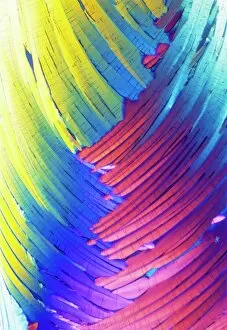Glucocorticoid Collection
"Exploring the Fascinating World of Glucocorticoids: From Cortisol Crystals to Steroid Drugs" Glucocorticoids, such as cortisol
All Professionally Made to Order for Quick Shipping
"Exploring the Fascinating World of Glucocorticoids: From Cortisol Crystals to Steroid Drugs" Glucocorticoids, such as cortisol, are a group of steroid hormones that play vital roles in our body's response to stress and inflammation. These powerful molecules can be visualized under a light micrograph, revealing intricate cortisol crystals that resemble tiny sparkling gems. One application of glucocorticoids is seen in hydrocortisone ointment F008/3400. This topical medication contains synthetic cortisol and is commonly used to alleviate skin conditions like eczema or dermatitis. Its effectiveness lies in its ability to reduce inflammation and suppress immune responses locally. Another notable member of the glucocorticoid family is budesonide steroid drug F007/0117 and F007/0118. These medications have found their place in treating various respiratory disorders, including asthma and chronic obstructive pulmonary disease (COPD). By targeting specific receptors within our airways, they help decrease inflammation, allowing for improved breathing. The molecular model of the estrogen receptor also intertwines with glucocorticoids' story. Although primarily associated with female reproductive functions, these receptors can interact with certain glucocorticoids too. This interaction highlights the complex interplay between different hormone systems within our bodies. Zooming into the molecular level again reveals the cortisone molecule—a precursor to active glucocorticoids like cortisol—playing an essential role in regulating metabolism and immune responses throughout our system. Returning once more to captivating images under a microscope showcases another glimpse into the world of cortisol crystals through light micrographs C015/6786. The intricate patterns formed by these crystals remind us of nature's beauty even at microscopic scales. Ultimately, understanding glucocorticoids unlocks insights into how our bodies respond to stressors while offering therapeutic avenues for managing various medical conditions.












